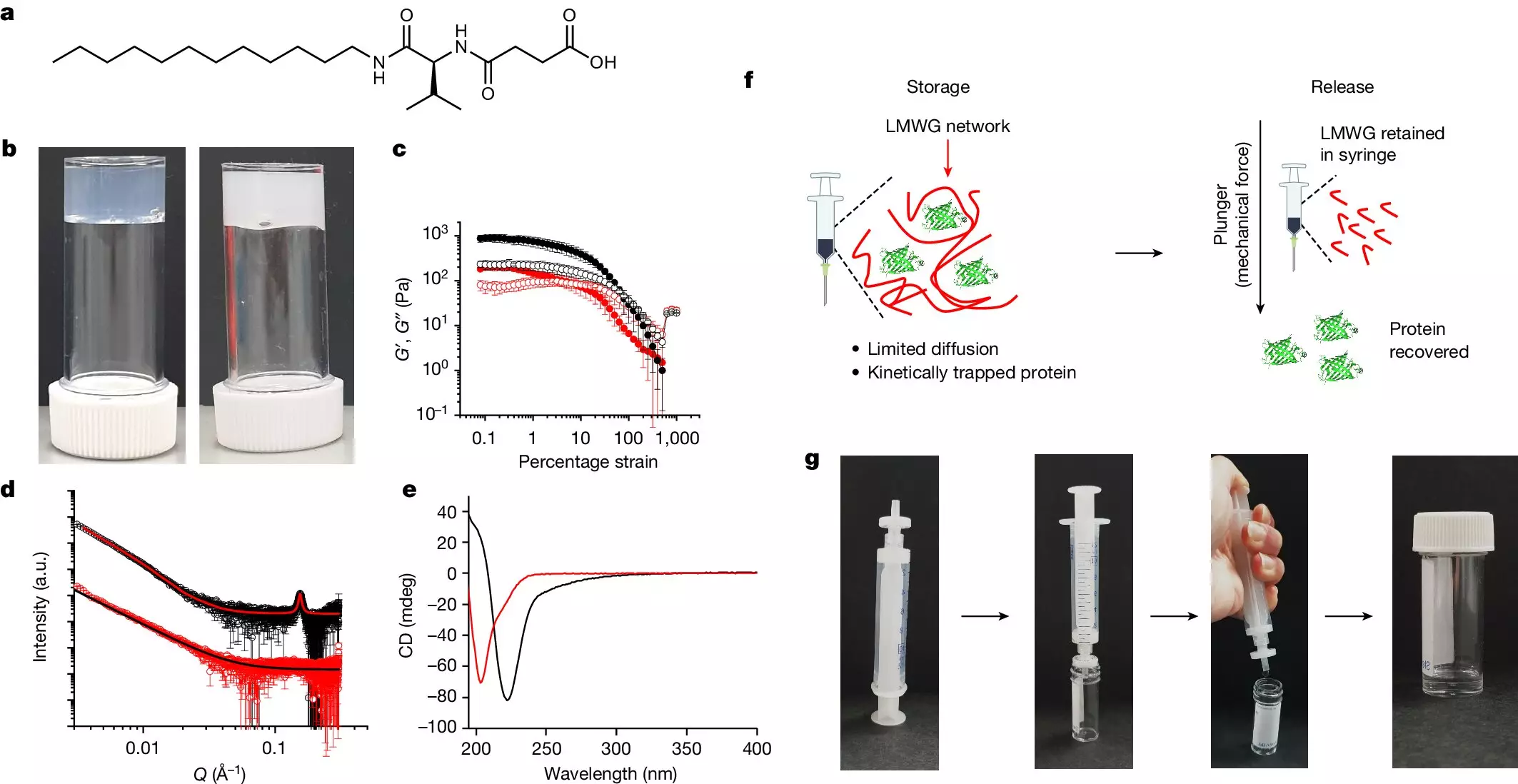The world of medical therapeutics is on the brink of transformation thanks to an innovative development from researchers at the Universities of Manchester, Glasgow, and Warwick. This groundbreaking work, recently published in *Nature*, introduces a novel way to stabilize and transport crucial protein-based medicines, eliminating the longstanding reliance on cold storage. By overcoming the constraints of existing storage methods that require refrigeration, this technology has the potential to revolutionize medical practices, especially in developing nations lacking the infrastructure to maintain traditional cold-chain conditions.
For countries grappling with resource constraints, this advancement could serve as a lifeline, allowing for wider distribution of life-saving medications. The hydrogel, primarily composed of water and designed to stabilize proteins efficiently, can withstand temperatures as high as 50°C. Given that temperature control typically requires colossal energy investments, this new approach is not just efficient but also environmentally friendly. It makes protein therapeutics more accessible to those who need them most.
The Power of Hydrogel: A Technical Breakdown
At the heart of this innovation lies a low molecular weight gelator (LMWG), which forms a complex three-dimensional network of fibers. This unique structure plays a crucial role in protecting proteins from aggregation—a common challenge that limits the efficacy of these therapeutic agents. When mixed into the hydrogel, proteins become trapped between the fibrous structures, preventing any detrimental interactions that could hinder their functionality. This clever design allows for a controlled release of protein therapeutics when needed.
Furthermore, the hydrogel’s design enables its use in everyday medical instruments, such as syringes. This practicality is pivotal; by incorporating a special filter, medical professionals can easily extract the desired proteins without losing effectiveness or introducing compromises in their operational integrity. The hydrogel’s ability to release proteins cleanly while remaining stable at room temperature is a remarkable achievement that could redefine how we view protein delivery systems.
A New Hope for Various Medical Applications
Protein therapeutics have become crucial for treating numerous health conditions, including diabetes and even certain cancers. Insulin, for instance, typically requires stringent temperature management. In this research, scientists subjected insulin stored within the hydrogel to harsh conditions—warming to 25°C and spinning at an astounding 600 revolutions per minute. The results were astounding: the integrity of the protein remained intact, signifying a giant leap in protein therapeutics management.
Moreover, the hydrogel has shown promising results with beta-galactosidase—a pivotal enzyme in biotechnology and life sciences. The researchers maintained it at a blistering 50°C for a week, only to discover that it retained 97% of its functionality compared to a fresh sample. This resilience against harsh conditions underscores the hydrogel’s potential not merely as a storage solution but also as an innovative platform for transporting sensitive proteins that would otherwise degrade.
Far-Reaching Implications for Global Health
The implications of this research extend beyond mere storage solutions; they signal a shift in the entire paradigms surrounding diagnostic and therapeutic protocols. Historically, the “cold chain” has been a barrier to equitable healthcare distribution, particularly in remote or underserved regions. With this hydrogel technology, healthcare facilities can receive protein therapeutics without the burden of refrigeration logistics. This could expedite treatment accessibility and significantly reduce the economic costs associated with maintaining cold storage.
Furthermore, the hydrogel’s compatibility with existing medical equipment also suggests that its integration into current healthcare frameworks may be smoother than anticipated. By lessening the need for specialized equipment, medical practitioners can focus on what matters most: improving patient outcomes.
A Path to Future Innovations
In his statements, Professor Dave Adams expressed confidence that this technology will significantly enhance healthcare delivery. With the ability to transport proteins both safely and effectively, the researchers are exploring commercial opportunities for this patent-pending technology. As evident from the rigorous testing results, the hydrogel not only presents a practical solution but also showcases the potential for further advancements in biotechnology.
The development of this innovative hydrogel technology reflects an exciting new chapter in the realm of protein therapeutics. As the research progresses into commercialization, we stand on the cusp of a new era—where life-saving medications can be distributed widely and efficiently, ultimately ushering in enhanced global health outcomes and paving the way for innovative medical practices.


Leave a Reply